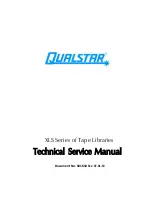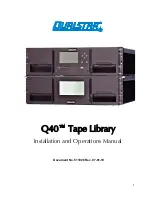
v
A maximum of 1,280 logical paths on each Fibre Channel port
v
Access to all 255 control-unit images (65,280 CKD devices) over each
FICON port
v
A maximum of 512 logical paths per control unit image
Note:
IBM z13
®
and IBM z14 servers support 32,768 devices per FICON host
channel, while IBM zEnterprise
®
EC12 and IBM zEnterprise BC12 servers support
24,576 devices per FICON host channel. Earlier IBM Z servers support 16,384
devices per FICON host channel. To fully access 65,280 devices, it is necessary to
connect multiple FICON host channels to the storage system. You can access the
devices through a Fibre Channel switch or FICON director to a single storage
system FICON port.
The storage system supports the following operating systems for IBM Z hosts:
v
Linux
v
Transaction Processing Facility (TPF)
v
Virtual Storage Extended/Enterprise Storage Architecture
v
z/OS
v
z/VM
®
v
z/VSE
®
For the most current information on supported hosts, operating systems, adapters,
and switches, go to the IBM System Storage Interoperation Center (SSIC) website
(www.ibm.com/systems/support/storage/config/ssic).
I/O load balancing
You can maximize the performance of an application by spreading the I/O load
across processor nodes, arrays, and device adapters in the storage system.
During an attempt to balance the load within the storage system, placement of
application data is the determining factor. The following resources are the most
important to balance, roughly in order of importance:
v
Activity to the RAID drive groups. Use as many RAID drive groups as possible
for the critical applications. Most performance bottlenecks occur because a few
drive are overloaded. Spreading an application across multiple RAID drive
groups ensures that as many drives as possible are available. This is extremely
important for open-system environments where cache-hit ratios are usually low.
v
Activity to the nodes. When selecting RAID drive groups for a critical
application, spread them across separate nodes. Because each node has separate
memory buses and cache memory, this maximizes the use of those resources.
v
Activity to the device adapters. When selecting RAID drive groups within a
cluster for a critical application, spread them across separate device adapters.
v
Activity to the Fibre Channel ports.
Storage consolidation
When you use a storage system, you can consolidate data and workloads from
different types of independent hosts into a single shared resource.
You can mix production and test servers in an open systems environment or mix
open systems and IBM Z hosts. In this type of environment, servers rarely, if ever,
contend for the same resource.
30
DS8882F Introduction and Planning Guide
Содержание DS8882F
Страница 34: ...24 DS8882F Introduction and Planning Guide...
Страница 46: ...36 DS8882F Introduction and Planning Guide...
Страница 70: ...60 DS8882F Introduction and Planning Guide...
Страница 86: ...76 DS8882F Introduction and Planning Guide...
Страница 98: ...88 DS8882F Introduction and Planning Guide...
Страница 120: ...110 DS8882F Introduction and Planning Guide...
Страница 126: ...116 DS8882F Introduction and Planning Guide...
Страница 132: ...122 DS8882F Introduction and Planning Guide...
Страница 134: ...124 DS8882F Introduction and Planning Guide...
Страница 138: ...128 DS8882F Introduction and Planning Guide...
Страница 140: ...130 DS8882F Introduction and Planning Guide...
Страница 158: ...148 DS8882F Introduction and Planning Guide...
Страница 163: ......
Страница 164: ...IBM Printed in USA GC27 9259 00...
















































